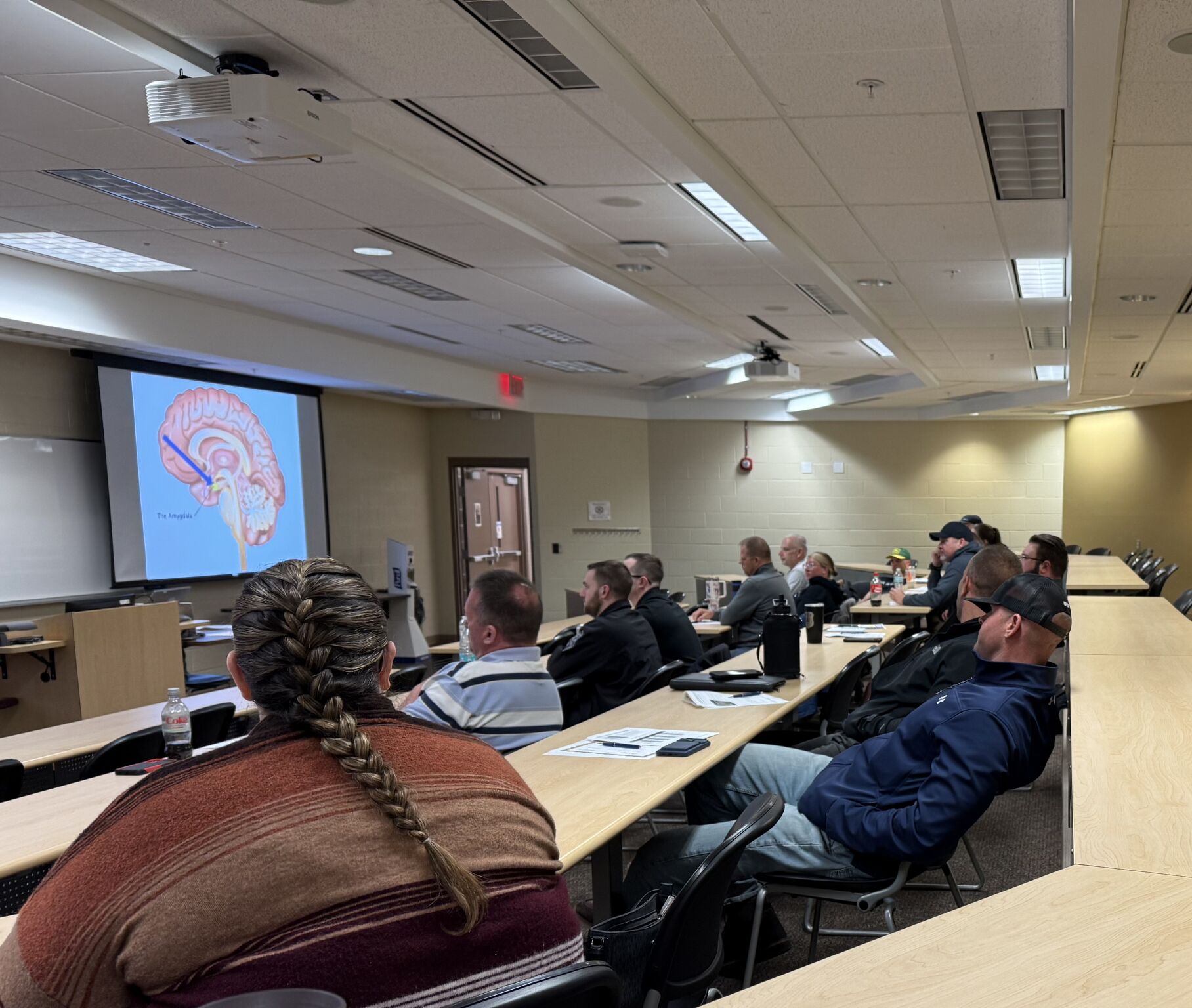The Leadership Journey Begins Before the Promotion
Leadership doesn’t begin with a title. It begins the moment an officer decides to serve with purpose, to take ownership of their influence, and to build trust with those around them.
Across thousands of agencies, the best leaders aren’t waiting for stripes or stars—they’re leading right where they are. They’re the officers who stay calm when tensions rise, who coach their peers through challenges, and who model accountability even when no one is watching.
At Command Presence, we’ve trained more than 75,000 public safety professionals across North America. One pattern stands out: officers who intentionally develop leadership habits before promotion transition far more successfully when the opportunity arises.
Leadership isn’t a destination—it’s a discipline.
Building the Skills That Matter Most in Your First Supervisory Role
Transitioning from peer to supervisor is one of the most challenging—and rewarding—steps in any officer’s career. The foundation you build now will determine how confidently you lead when the time comes.
Emotional Intelligence on the Street and in the Squad Room
Great leaders aren’t defined by how loud they speak but by how well they listen. Emotional intelligence—the ability to understand, manage, and respond to emotions under pressure—is critical in both field encounters and team leadership.
- In the field, emotional control helps you de-escalate conflict and model composure.
- In leadership, it builds credibility. Your officers need to see you as steady, fair, and approachable—even when situations get tense.
Command Presence instructors often remind emerging leaders: “You can’t lead people you don’t understand.” Start developing that understanding now—ask questions, observe reactions, and practice empathy in every interaction.
Decision-Making Under Stress
Every officer is trained to make quick decisions under pressure. As a leader, that skill evolves. You’re no longer just responsible for your actions—you’re accountable for your team’s performance and safety.
Strong decision-making in leadership means:
- Pausing before reacting. The first response isn’t always the best one.
- Gathering input. Great leaders invite perspectives before final decisions.
- Communicating clarity. Once the decision is made, your team must understand the “why.”
Courses like Dynamics of Officer-Citizen Encounters are designed to strengthen this skill set, helping officers think, act, and lead decisively when it matters most.
Common Pitfalls New Leaders Face—and How to Avoid Them
Even strong officers can stumble when they step into leadership roles. Awareness of the pitfalls makes all the difference.
1. Relying on Authority Over Influence
Leadership isn’t enforced—it’s earned. The most effective sergeants and supervisors lead through respect, not rank. Influence grows from consistency, fairness, and humility.
2. Confusing Friendship with Leadership
Leading former peers is tough. It’s natural to want to maintain camaraderie, but your first obligation is to the mission and your team’s performance. Set clear expectations early and communicate openly.
3. Neglecting Mentorship and Accountability
Leadership isn’t a solo sport. Seek mentors who have walked this path before you—and stay accountable to them. A mentor can provide perspective when the pressures of leadership feel isolating.
Leadership Isn’t Learned Alone—Find a Mentor and Model Success
Every great leader stands on the shoulders of others. The law enforcement community is filled with seasoned professionals willing to share lessons earned through years of service.
At Command Presence, many of our instructors—from patrol veterans to former Chiefs—credit their growth to strong mentors who invested in them. They pass that same wisdom on to the next generation through our Leadership Series Courses and workshops.
How to Find the Right Mentor:
- Look for integrity over popularity.
- Choose someone who models the values you want to embody.
- Be proactive—ask questions, seek feedback, and observe their leadership style.
Leadership is contagious. Surround yourself with people who elevate your standards.
Take the Next Step in Your Leadership Development
If you’re ready to lead with confidence, clarity, and composure, now is the time to invest in your growth. Start where you are—and build forward.
Recommended Next Steps:
- Register for Leading Without Rank: The Emerging Leader – Discover and Maximize Leadership Potential.
- Explore Dynamics of Officer-Citizen Encounters – Improve communication, decision-making, and confidence under pressure.
- Connect with your agency’s training coordinator to host a leadership development course through Command Presence.
Closing Thought
John C. Maxwell once said, “A leader is one who knows the way, goes the way, and shows the way.”
Whether you’re on patrol today or preparing for your first supervisory badge tomorrow, your leadership journey starts with how you show up—right now. Lead where you are, invest in your growth, and empower those around you.
That’s what true command presence looks like.







